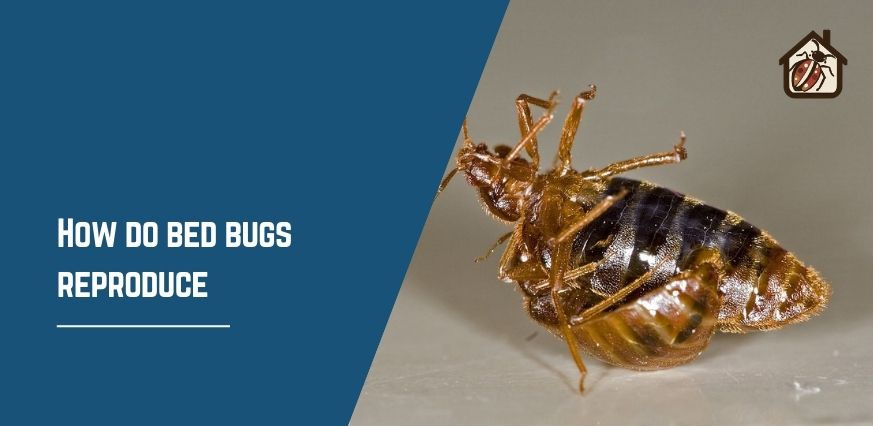
How do bed bugs reproduce
Bed bugs are oviparity. Bed bugs require both males and females to reproduce. The process of their reproduction is called “traumatic insemination or hypodermic”. Even though they require two sexes to reproduce, bed bugs have a unique way of the insemination process. In this blog, you will explore how do bed bugs reproduce.
How do bed bugs reproduce?
The male bed bug doesn’t use a specific spot on the female bug’s body for mating. Instead, he stabs her anywhere with his “hypodermic” organ and releases sperm. The sperm then travels through her body to fertilize the eggs in her ovaries.
This process harms the female because it can cause infection, trigger her immune system, and shorten her lifespan. Some bedbug species have an organ called a “spermalege” that helps males find safer places to mate on the female’s body.
Male bed bugs may sometimes forcefully inseminate other males, and they might even inseminate other insects that are not related to them. But don’t fret, they don’t mate with humans; instead, bed bugs feed just on human blood using their sharp, pointed mouthparts.
How long does it take for the bed bug eggs to hatch?
Then, the female bed bugs start feeding on blood as they require a lot of blood to lay eggs. It takes her about three days to fully develop the eggs and lay them. She can lay about 1 to 6 eggs in a day and it takes about 7-14 days to hatch.
When it’s time to lay the eggs, she looks for a dark crevice where the eggs can stay safe and unbothered until it takes time to hatch eggs. She starts reproducing again after about 6 weeks. By this time, her children would have been old enough to lay eggs themselves.
You may also like:
- Why are bed bugs so hard to eliminate
- What are affordable and effective methods to deal with bedbugs
- Is there any permanent solution for bed bugs
FAQs
How do bed bugs reproduce?
How do bed bugs multiply so quickly?
Can 1 bed bug multiply?
How do bed bugs originally start?
Can one-bed bug bite 10 times?
Do bed bugs multiply when killed?
Conclusion
It’s in the name; ‘traumatic’ insemination. The process is indeed very traumatic, mainly for the females. The male bed bugs purposely try going for fuller female bed bugs because their out body is stretched out and the body walls are thinner.
And bed bugs have not evolved to have immunity against the male jabs. The open world is very susceptible to infection and the female bed bugs do take a while to recover before they can reproduce themselves.
Nature is wonderful and also very shocking. Bed bug reproduction falls under the shocking nature by a mile. But as disturbing as it is, it is the way of nature and the cycle will continue.


